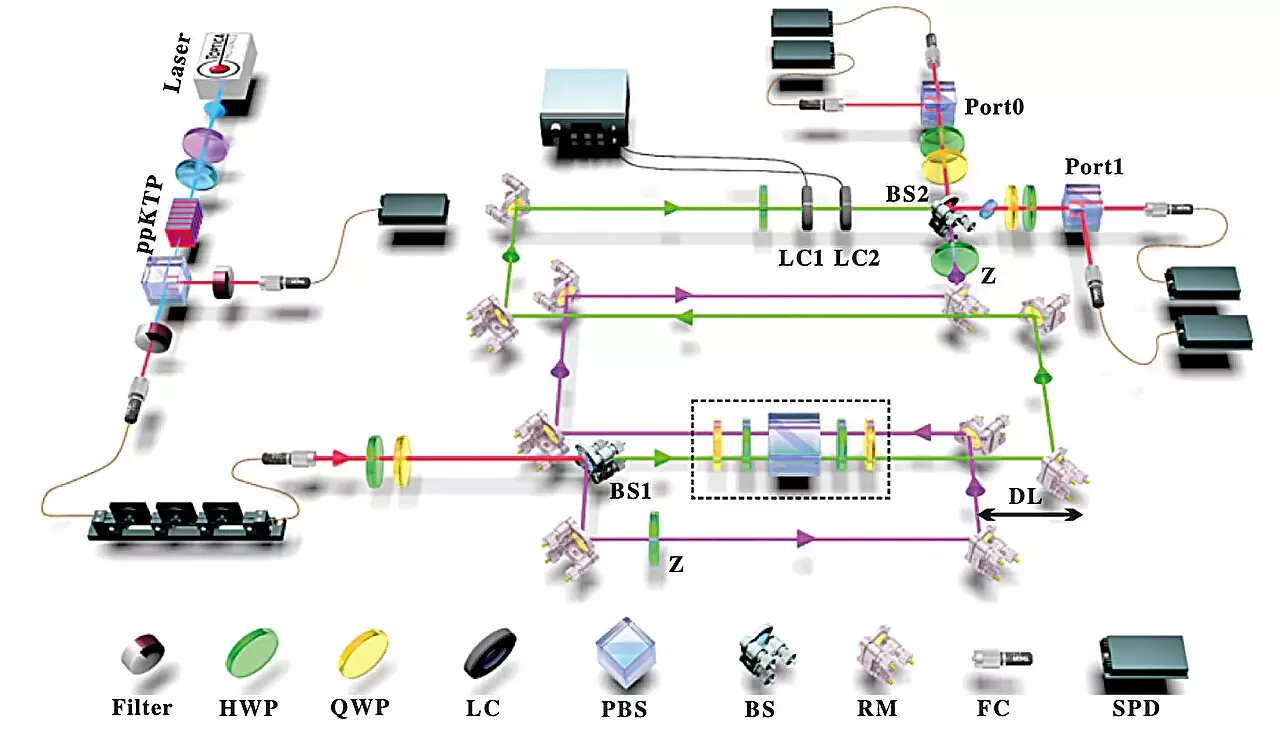In a recent study published in Physical Review Letters, a research team led by academician Guo Guangcan, Prof. Li Chuanfeng, and Prof. Liu Biheng from the University of Science and Technology of China (USTC) collaborated with Prof. Giulio Chiribella from the University of Hong Kong to construct a coherent superposition of quantum evolution with two opposite directions in a photonic system. The team aimed to explore the advantages of this approach in characterizing input-output indefiniteness, showcasing its potential in quantum information and photonic quantum technologies.
Time Reversal Symmetry in Quantum Mechanics
The concept of time reversal symmetry in quantum mechanics challenges the common notion that time flows inexorably from the past to the future. While classical and quantum mechanics possess reversible equations of motion, changing the direction of the time coordinate system remains a valid evolution process. This fundamental property opens up avenues for exploring multi-time quantum states, simulating closed timelike curves, and inverting unknown quantum evolutions within the realm of quantum information science.
One of the key challenges in quantum information science is the experimental realization of time reversal. The research team addressed this obstacle by extending the concept of time reversal to the input-output inversion of a quantum device in a photonic setup. By exchanging the input and output ports of the device, they were able to achieve a time-reversal simulator for quantum evolution, showcasing the versatility and applicability of quantum principles in experimental settings.
Building upon the success of the time-reversal simulator, the team further quantized the evolution time direction, leading to a coherent superposition of quantum evolution and its inverse evolution. This breakthrough allowed for the characterization of structures using quantum witness techniques, providing new insights into the advantages of input-output indefiniteness as a valuable resource in quantum channel identification.
The quantization of the time direction demonstrated significant advantages in quantum channel identification compared to traditional strategies with a definite time direction. Through the use of the device constructed by the research team, researchers were able to distinguish between two sets of quantum channels with a remarkable 99.6% success probability, surpassing the limitations of strategies based on a definite time direction and showcasing the potential of input-output indefiniteness as a powerful tool in advancing quantum information and photonic quantum technologies.
The study highlights the importance of exploring new approaches to quantum evolution and time-reversal symmetry in experimental settings, paving the way for future advancements in quantum information science and quantum technology applications.


Leave a Reply